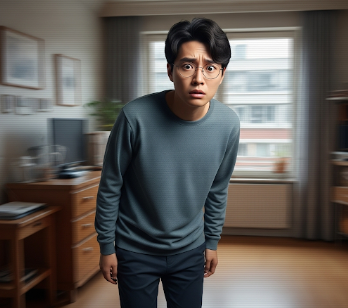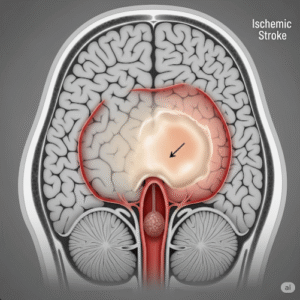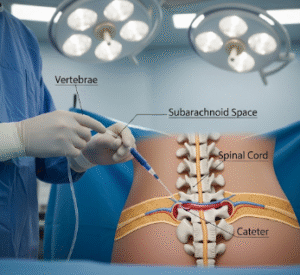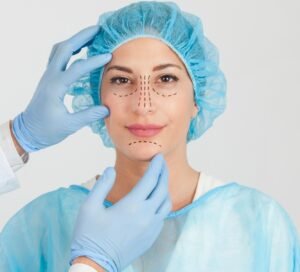Overview
Oscillopsia is a neurological condition in which a person perceives that their visual environment is moving or bouncing, even though objects are stationary. This can cause difficulty focusing, imbalance, dizziness, and motion sensitivity, significantly affecting daily activities and quality of life.
In Korea, oscillopsia is evaluated by neurologists, ophthalmologists, and vestibular specialists, who focus on identifying the underlying cause and providing tailored treatment to improve visual stability and balance.
Key Facts
➤ Oscillopsia is the illusion of visual motion when the environment is actually stable.
➤ Often associated with vestibular disorders, neurological conditions, or eye movement abnormalities.
➤ Can occur suddenly or gradually, depending on the underlying cause.
➤ May lead to balance problems, nausea, or increased risk of falls.
➤ In Korea, early diagnosis and rehabilitation improve functional outcomes and safety.
What is Oscillopsia?
Oscillopsia is a disturbance in visual perception, caused by a mismatch between eye movement and head movement or neurological dysfunction.
➔ Key points:
- Patients perceive objects as bouncing, swaying, or oscillating.
- Symptoms worsen with head movements, walking, or complex visual environments.
- Commonly results from damage to the vestibular system, ocular motor pathways, or brain regions responsible for visual stability.
Associated disorders may include:
- Vestibular neuritis or bilateral vestibular loss.
- Multiple sclerosis or other demyelinating diseases.
- Cerebellar disorders affecting coordination of eye movements.
- Nystagmus or abnormal eye movement patterns.
Symptoms Related to Oscillopsia
➤ Visual environment appears to move or bounce.
➤ Difficulty reading or focusing on stationary objects.
➤ Imbalance, unsteadiness, or frequent falls.
➤ Dizziness or vertigo, often triggered by motion.
➤ Nausea or motion sickness in some cases.
➤ Headaches or eye strain due to constant visual instability.
Causes / Possible Causes
Vestibular Causes
➤ Bilateral vestibular loss – often due to infections, ototoxic medications, or aging.
➤ Vestibular neuritis or labyrinthitis – inflammation affecting inner ear balance structures.
➤ Meniere’s disease – inner ear fluid imbalance affecting stability.
Neurological Causes
➤ Multiple sclerosis or other demyelinating diseases – affecting ocular motor pathways.
➤ Cerebellar disorders – impairing coordination between eye and head movements.
➤ Brainstem lesions – affecting vestibulo-ocular reflexes.
Ocular Causes
➤ Nystagmus – involuntary rhythmic eye movements.
➤ Eye movement disorders – congenital or acquired abnormalities.
Other Causes
➤ Head trauma – damaging vestibular or ocular motor structures.
➤ Medications – certain drugs affecting the vestibular or neurological system.
➤ Aging – gradual decline in vestibular and ocular motor function.
Risk Factors
➤ Previous inner ear infections or disorders.
➤ Neurological disorders such as multiple sclerosis or cerebellar ataxia.
➤ Ototoxic medication use (e.g., aminoglycosides).
➤ Head or neck trauma affecting vestibular or ocular systems.
➤ Advanced age, leading to decreased vestibular function.
Complications
Untreated oscillopsia can result in:
➤ Increased risk of falls and injuries due to imbalance.
➤ Difficulty performing daily tasks such as reading or driving.
➤ Chronic dizziness, nausea, or motion sickness.
➤ Psychosocial impact, including anxiety and social withdrawal.
➤ Reduced quality of life from persistent visual instability.
When Should I See My Doctor?
Seek medical attention if:
➤ You experience persistent visual motion perception.
➤ Balance problems or frequent falls accompany the visual symptoms.
➤ There is sudden onset after head injury or infection.
➤ Symptoms are worsening or interfering with daily activities.
➤ Associated with neurological deficits, such as weakness, numbness, or slurred speech.
Care and Treatment
Lifestyle and Home Measures
➤ Move slowly and deliberately to reduce motion-induced symptoms.
➤ Avoid visually complex or busy environments if symptoms are aggravated.
➤ Use assistive devices such as canes or walkers for safety.
➤ Adequate rest and hydration to reduce dizziness and fatigue.
Medical Treatments
➤ Vestibular rehabilitation therapy (VRT) – exercises to retrain balance and eye-head coordination.
➤ Medication – for underlying causes such as anti-vertigo agents or anti-inflammatory drugs.
➤ Treatment of underlying neurological or vestibular disorders.
➤ Corrective lenses or prism glasses – in select cases to reduce visual instability.
Preventive Measures
➤ Early evaluation after vestibular infections or head trauma.
➤ Avoid ototoxic drugs unless medically necessary.
➤ Regular balance and eye exercises in patients at risk.
➤ Monitor and manage chronic neurological conditions proactively.
Treatment Options in Korea
Korean medical centers provide comprehensive care for oscillopsia, including:
Diagnostic Services
➤ Neurological assessment – to identify central or peripheral causes.
➤ Vestibular function tests – caloric testing, video head impulse test (vHIT), and posturography.
➤ Ophthalmologic examination – to evaluate eye movement disorders.
➤ Imaging studies – MRI or CT to detect brainstem, cerebellar, or orbital abnormalities.
Therapies and Supportive Care
➤ Vestibular rehabilitation therapy with specialized exercises.
➤ Medication management for dizziness, nausea, or underlying conditions.
➤ Balance training and safety counseling to prevent falls.
➤ Multidisciplinary care involving neurologists, ENT specialists, and ophthalmologists.
➤ Customized visual aids for patients with severe ocular motor instability.
✅ In summary: Oscillopsia is the perception of a bouncing or moving visual field, often caused by vestibular, neurological, or ocular disorders. In Korea, early diagnosis, vestibular therapy, and multidisciplinary care help stabilize vision, improve balance, and enhance quality of life.













